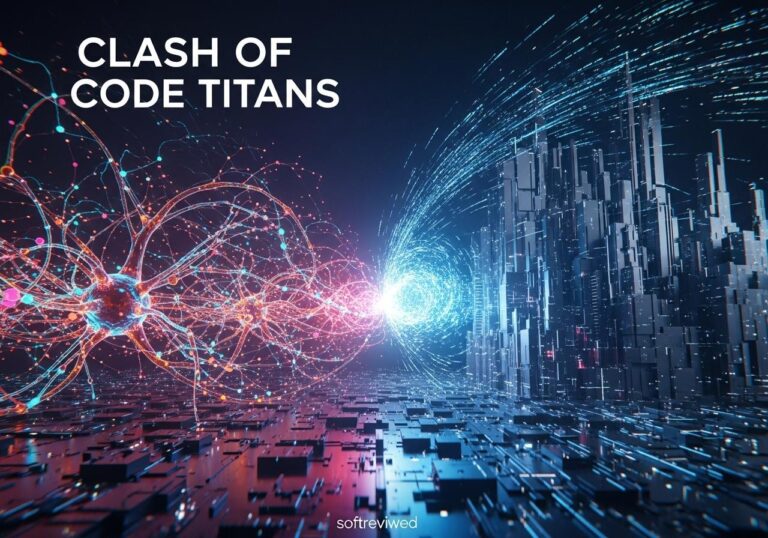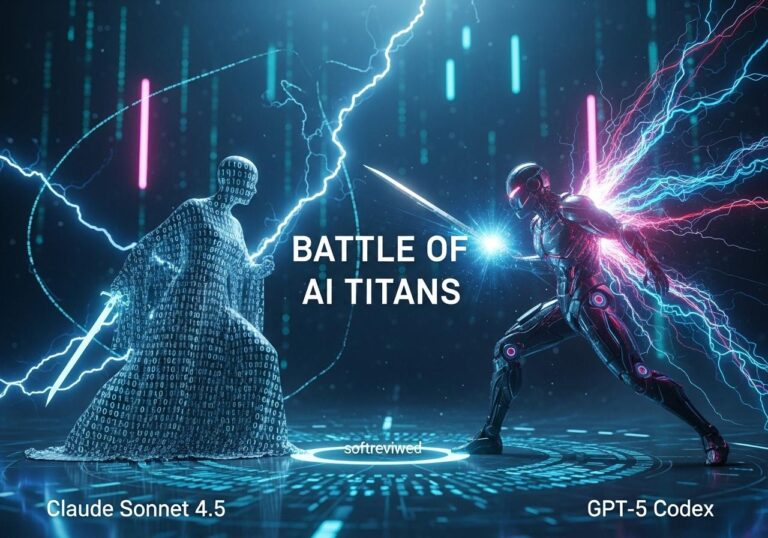STORM: Stanford’s AI-Powered Research Tool
A revolutionary open-source research tool for creating comprehensive Wikipedia-style reports
🎓 Free Access
Stanford University’s STORM is freely available for all users, democratizing access to advanced research capabilities.
📚 Comprehensive Content
AI-powered research delivers 10% broader coverage and 25% better structure compared to traditional methods.
💻 Open-Source Platform
Full access to source code and documentation on GitHub for customization and transparency.
🤝 Multi-Perspective Research
Team of AI agents simulate conversations to gather diverse viewpoints and comprehensive insights.
⚡ User-Friendly Interface
Generate high-quality research content with a simple topic input, perfect for students and researchers.
🏆 High Performance
Scores 93/100, outperforming Google Deep Research (91/100) and Perplexity (83/100) in research quality.
The landscape of AI-powered research is becoming increasingly dominated by subscription-based services. You've likely encountered Google Deep Research (through Gemini Advanced) and Perplexity AI, both offering powerful tools, but often at a cost. But now, there’s a compelling free alternative: Stanford's Project Storm. This open-source research project is rapidly gaining attention for its innovative approach to knowledge curation, providing comprehensive, well-cited articles without a subscription fee. Is it a true contender against these paid platforms? Let's explore how Stanford's Storm provides a free alternative for in-depth AI research.
What is Stanford's Project Storm?
STORM, short for Synthesis of Topic Outlines through Retrieval and Multi-perspective Question Asking, is an innovative AI research project developed at Stanford University's Open Virtual Assistant Lab (OVAL). 💡Unlike traditional search engines, or even other AI research tools, STORM is designed to automate the knowledge curation process, essentially crafting detailed, Wikipedia-style reports from scratch. This isn't about quickly finding answers; it's about generating well-structured, in-depth articles with complete citations, all while remaining a free service.
The Brain Behind the Storm
The STORM project is led by Stanford students and faculty, including Yijia Shao, Yucheng Jiang, Theodore A. Kanell, Peter Xu, Omar Khattab, and Monica S. Lam. This team aimed to address the limitations of existing LLMs by creating a system that prioritizes accuracy and comprehensive research. They focused on the pre-writing stage, ensuring thorough information gathering before generating content. The team's work is driven by the need for reliable and verifiable information in academic and research settings.
How STORM Creates Wikipedia-Style Articles
STORM's process is quite fascinating. First, it gathers information from across the internet, identifying key sources and data points. It then generates an outline for the topic, incorporating multiple perspectives by simulating discussions between different AI agents, essentially acting as a team of expert editors. This helps ensure that various facets of a topic are considered. Finally, it uses the collected information and created outline to produce a full-length article, complete with citations. You can even view the brainstorming process, which gives you insight into how the AI reaches its conclusions. 🤯
Storm vs. Google and Perplexity: A New Era of Free AI Research?

Google has long dominated the search market, and its recent AI integrations, such as Google Deep Research, are designed to keep it at the forefront – but typically at a premium price. How does this paid tool, and other AI tools, compare to the free alternative offered by STORM?
Google's AI Overviews & Deep Research: A Quick Summary
Google's AI Overviews aim to provide users with concise summaries of topics directly within search results. These overviews are generated by AI based on information gathered from various sources. Google Deep Research, available in Gemini Advanced, takes it a step further. It is designed to act as a personal AI research assistant, exploring complex topics and generating reports. While offering more depth than AI Overviews, it still might not match the thoroughness of a dedicated research tool like STORM. Google's focus is on quick and easy access to information, but its sourcing can sometimes lack transparency and accuracy. Google's new AI features are certainly changing search, and users are adjusting. The AI overviews can be useful, and for users who still prefer traditional web results, Google still offers the option to "show only web links".
Storm's Approach: In-Depth, Free Research Reports
STORM takes a different route. Rather than offering quick summaries or even a more complex AI-generated report, STORM aims to provide a full-fledged, in-depth research report on any topic – all for free. It emphasizes the pre-writing stage by conducting thorough research online. It uses these findings to write the report with the information gathered and creates a structured and organized article similar to what you might find in Wikipedia, complete with citations and links to its sources. For those needing more than just a brief overview, or even a typical AI-generated report, STORM’s in-depth approach is a welcome free alternative. ✅
Storm vs. Perplexity: A Head-to-Head Comparison
Perplexity AI has become a popular choice for users seeking a hybrid between a search engine and a chatbot. But how does STORM stack up against this AI powerhouse, and how do all these tools compare with Google Deep Research in terms of features and cost?
Perplexity AI: The AI-Powered Answer Engine
Perplexity AI is known for its ability to provide accurate and relevant search results through natural language queries. It offers features like real-time information retrieval, citation tracking, and a conversational interface. It’s designed to deliver quick answers, similar to Google's AI overviews, but it provides more transparency and includes citations. Perplexity is like a research assistant that directly answers your questions by finding information across the web. It's very useful when you need information on a topic and want that info quickly with supporting sources.
Key Differences between Storm, Google Deep Research and Perplexity
While all three (STORM, Google Deep Research, and Perplexity) are AI-driven research tools, they cater to slightly different needs. Here’s a breakdown of the key distinctions:
| Feature | STORM | Google Deep Research | Perplexity AI |
|---|---|---|---|
| Research Focus | Generates long-form, Wikipedia-style articles from scratch. Ideal for deep research. | Acts as a personal AI research assistant, exploring topics and compiling reports. | Provides direct answers to queries with citations, quick retrieval. |
| Output | Structured, cited research reports. | AI-generated reports, including structured information from many sources. | Conversational answers with inline citations. |
| Transparency | Shows "brainstorming" process. Provides full citations. | Offers insights into its findings, providing links to sources. | Offers inline citations, source links are visible. |
| Interface | Topic input for creating reports. | Text-based prompt for research. | Chatbot interface for question-answer interaction. |
| Pricing | Open-source, free to use. | Part of the paid Gemini Advanced subscription (approx $20/month). | Free plan available, Pro plan ($20/month) for advanced features. |
Research Focus
📌 STORM: Focuses on generating long-form, Wikipedia-style articles from scratch. It's ideal for deep research and comprehensive reports.
📌 Google Deep Research: Aims to assist with researching complex topics and compiling information into reports. It's designed for in-depth research, but with less emphasis on collaborative editing.
📌 Perplexity: Aims to provide direct answers to user queries with supporting sources. It’s more of a search engine with AI, focusing on quick information retrieval and citations.
Transparency and Citations
📌 STORM: Provides insight into its "brainstorming" process, showing how it forms its findings. Offers complete citations with links within the generated articles.
📌 Google Deep Research: Provides source links in its findings, offering some degree of transparency in terms of its sourcing.
📌 Perplexity: Offers source citations inline with the text, showing you the sites from which it gathered information.
User Experience
📌 STORM: Requires you to enter a topic, then it searches hundreds of websites to produce an article summarizing key findings.
📌 Google Deep Research: Allows users to enter text-based prompts to generate research reports on specific topics.
📌 Perplexity: Utilizes a chatbot-like interface, where users can ask questions and receive direct answers with citations.
Pricing
📌 STORM: Is an open-source project and is currently free to use.
📌 Google Deep Research: Is part of the paid Gemini Advanced plan, costing approximately $20/month.
📌 Perplexity: Offers a free plan, along with a Pro plan (around $20/month) that gives you access to more advanced AI models, such as GPT-4 Omni and Claude 3, as well as more searches and features. Perplexity also offers an enterprise plan with custom pricing. You can find more information about Perplexity's different plans on their pricing page. Perplexity AI Pricing
Where Does Storm Fit in the AI Landscape?
STORM occupies a unique space in the AI landscape as a free alternative for in-depth research. It's not trying to be a better search engine or a chatbot, but rather a powerful AI tool for comprehensive research and article generation. Its open-source nature makes it accessible to a wide range of users looking for a cost-effective solution.
The Promise of Collaborative AI: Co-STORM
Another interesting feature of the Storm platform is Co-STORM, which incorporates human-AI collaboration. In this mode, users work alongside the AI, providing input, reviewing content, and working together to refine the generated research report. It's an interesting hybrid approach for those who want the efficiency of AI coupled with manual input to improve accuracy, while still remaining a free option.
Charting the Course: Future Possibilities for Storm
As STORM continues to develop, it is likely to find applications in education, research, and content creation. 🚀 We could see STORM become an essential tool for students, academics, and anyone who needs to gather and synthesize information quickly and reliably, without incurring any costs. Its open-source nature means that its features will continue to evolve, as researchers around the globe contribute to its development. The future of free AI-driven research tools appears to be very bright, and STORM is playing a key role in shaping it.
The Eye of the Storm: Key Takeaways
Stanford's Project Storm represents a significant advancement in AI-driven research tools, and provides a needed free alternative to tools like Google Deep Research and Perplexity. It offers a unique method for generating comprehensive articles with in-depth research and citations. While it may not replace traditional search engines or chatbot-like interfaces, STORM carves a niche by focusing on thorough knowledge curation, without requiring any paid subscription. As AI continues to reshape the way we access and use information, tools like STORM will undoubtedly play a pivotal role, especially as users explore free research options. 🤔
How to Use Storm for Free:
You can access the web version of Stanford's Project Storm directly at: Storm AI Web Interface. This interface allows you to input a topic and have the AI generate a full research report for free. The project’s github repository for developers is also available. Storm Github Repository
STORM AI Tool: Key Features and Capabilities
This chart illustrates the key features and adoption metrics of Stanford’s STORM AI tool, showing its various capabilities and user engagement levels.







